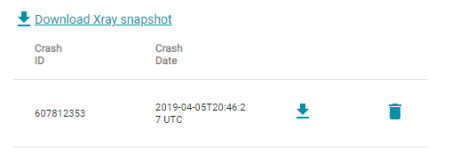Support and Troubleshooting
If you have comments or questions about AnzoGraph DB or run into an issue that you need help resolving, you can get help from the AnzoGraph DB user community or from Cambridge Semantics Support. This section provides information about the resources available for getting help and information that may help you troubleshoot issues you may encounter.
AnzoGraph DB Support
Cambridge Semantics provides the following options for getting free AnzoGraph DB technical support:
- Get help from our user community on Stack Overflow at https://stackoverflow.com/questions/tagged/anzograph. Cambridge Semantics monitors Stack Overflow. When posting a new question, include the anzograph tag.
- Send an email to anzograph-support@cambridgesemantics.com. Emails are automatically submitted to the AnzoGraph DB Service Desk and received by the Support team.
- Registered users can also access the AnzoGraph DB Service Desk directly from the Cambridge Semantics Customer Center at https://customercenter.cambridgesemantics.com.
Retrieving Diagnostic Files
When Cambridge Semantics Support requests AnzoGraph DB diagnostic files for troubleshooting an issue, you can quickly retrieve the files from the Diagnostics tab in the Admin Console.
There are two types of diagnostic files:
- Xray: Xrays are generated on-demand. If you encounter an error and the database remains running, you generate an Xray to produce the diagnostic files.
- Crash: If you encounter an error that crashes the database, AnzoGraph DB automatically generates a crash file that contains diagnostic information about the crash.
Xray and crash diagnostics are valuable tools that enable Cambridge Semantics to diagnose and fix issues without access or any other visibility into a customer’s data or database system. They can also be used to report on overall and detailed system performance, resulting in improved query performance for future releases of AnzoGraph DB.
Xrays and crash dumps harvest the diagnostic data that is stored in AnzoGraph DB's system tables. They include information such as:
- A low level, de-identified log of the requests that were sent to the database.
- Statistics like query operation step execution times, number of rows processed, and amount of memory used.
- Detailed but de-identified trace information for errors that were encountered.
- Configuration information such as the number of nodes in the cluster and AnzoGraph DB system settings values.
Xrays and crash dumps are designed to be anonymous and can be safely shared with Cambridge Semantics Support. They do NOT capture user information or any of the data that is loaded into memory by a user, nor do they expose details that could be used to reveal the nature of the data being queried.
Retrieving Xray or Crash Dump Files
Follow the instructions below to download an xray or crash dump to send to Cambridge Semantics Support.
- Log in to Admin Console and click the Diagnostics tab. The console displays the available options. For example:

- If you want to retrieve an xray, click the Download Xray snapshot link. AnzoGraph DB creates the xray and produces a tarball with a .xray extension. The console downloads the .xray file to your computer.
The files in the tarball are compressed. Do not compress the .xray file before sending it to Cambridge Semantics.
- If you want to retrieve a crash dump, click the Refresh button to refresh the list of available crash dump .xray files. Click the file name that you want to download. The console downloads the .xray file to your computer.
The files in the tarball are compressed. Do not compress the .xray file before sending it to Cambridge Semantics.